The Cashmere crisis in the Himalayan ice desert
British photographer Andrew Newey has documented the lives of the Changpa nomads in Kashmir, examining the threats to their Pashmina wool production.
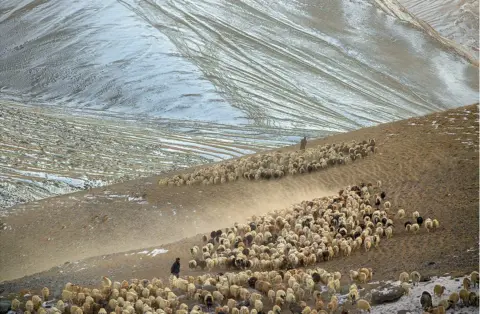 Andrew Newey
Andrew NeweyAndrew Newey spent two weeks with the Changpa nomads in freezing conditions in Ladakh, in Indian-administered Kashmir.
To accompany his photo series, Newey also learned about the history of Pashmina wool production, and the threats to the nomadic shepherds' way of life and traditions.
He explains in his own words: "At an altitude of more than 14,000ft, where winter temperatures can fall to -40 degrees Celsius, it is hard to believe anyone or anything can survive in this vast ice desert that is the Changthang Plateau.
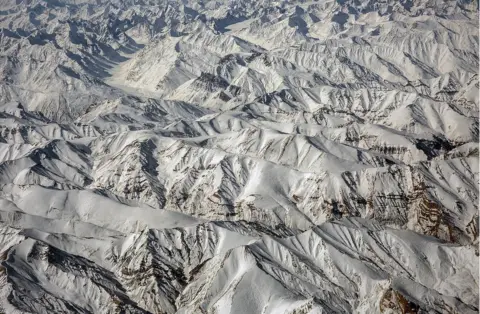 Andrew Newey
Andrew Newey"Situated between the Himalayan and Karakorum mountain ranges, it is the highest permanently inhabited plateau in the world, and home to an extremely hardy and rare breed of goat - the Changra, or Pashmina goat.
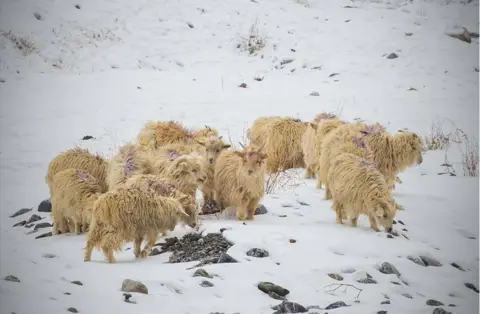 Andrew Newey
Andrew Newey"The high altitude, freezing temperatures and harsh bitter winds in this unforgiving mountainous region are essential to stimulate the growth of the goats' super-soft undercoat.
"The fibres measure a mere eight to 10 microns in width, making it around 10 times finer than human hair and eight times warmer than sheep wool.
"This luxurious fibre is known the world over as Pashmina, the softest and most expensive type of Cashmere wool in the world.
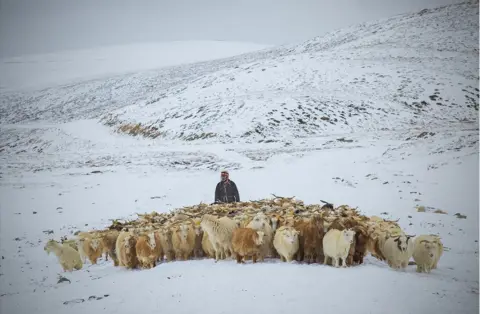 Andrew Newey
Andrew Newey"For centuries the Changpa nomads, who themselves are as hardy as their animals, have roamed 'the roof of the world', moving their herds of yak, sheep and goats along traditional migratory routes in this high altitude desert every few months, in search of fresh grazing pastures.
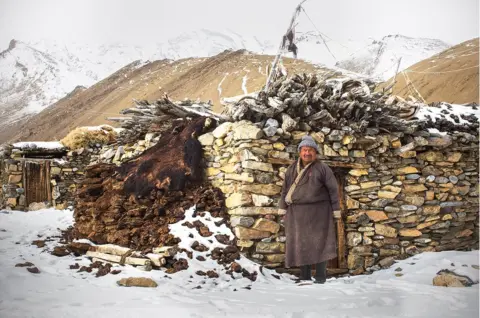 Andrew Newey
Andrew Newey"This ancient way of life is now very much under threat from climate change, fake Pashmina imports from China, the need for better education and the desire simply for an easier and more comfortable life.
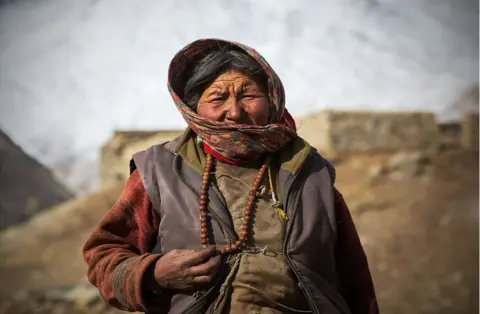 Andrew Newey
Andrew Newey
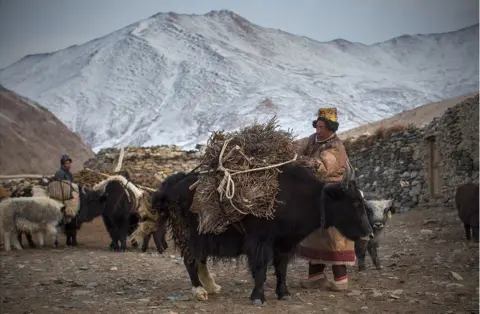 Andrew Newey
Andrew Newey"The nomads and scientists alike are adamant that climate change is the biggest threat to Pashmina production in the region.
"The Changthang plateau does not usually get much snowfall, and if it does, it begins in January or February.
"However, for the last few years it has been increasingly heavy, starting as early as December, even November.
"As a result, food supplements have to be brought in to prevent the animals dying from starvation. Also, the winters have been getting warmer, which has reduced the quality and quantity of the valuable Pashmina wool.
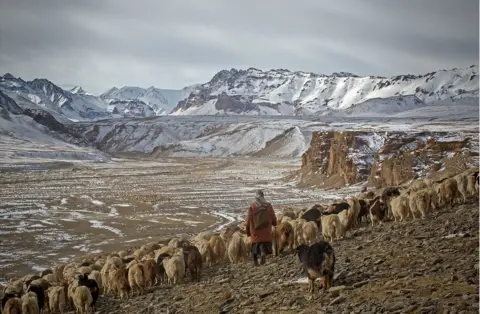 Andrew Newey
Andrew Newey"Cashmere is expensive, and rightly so. The Changpa carefully comb the hair during the spring moulting season to harvest the downy undercoat, and then the good fibre is laboriously separated from the bad by hand.
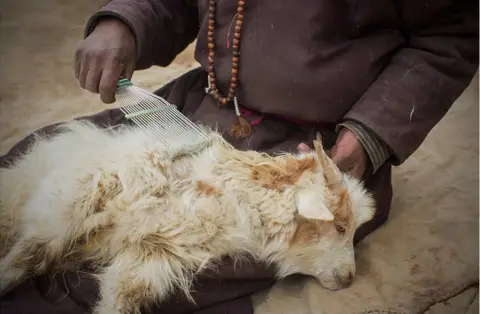 Andrew Newey
Andrew Newey
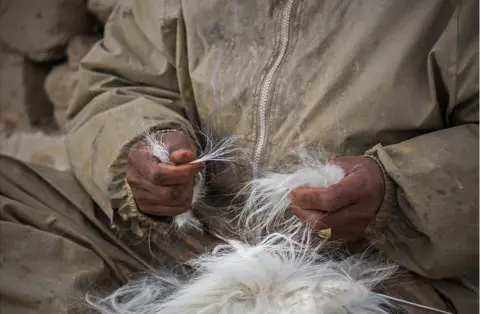 Andrew Newey
Andrew Newey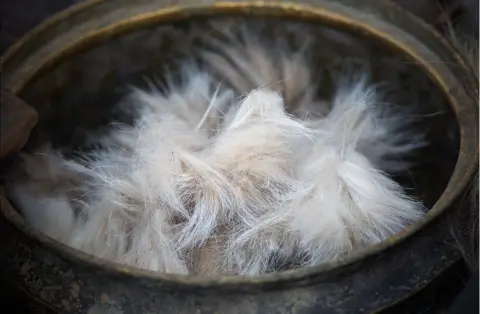 Andrew Newey
Andrew Newey"Once the fibres are manually sorted, cleaned and hand-spun, the weaving process can begin, which is equally demanding and painstaking.
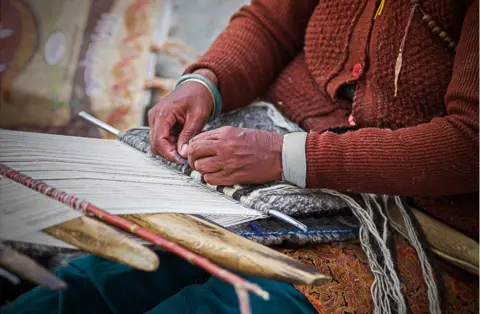 Andrew Newey
Andrew Newey"It takes several months to a year for highly skilled artisans to work their magic on wooden looms and weave a masterpiece which will be exported around the world, selling for between £150 ($200) and £1,500 ($2,000) by luxury retailers.
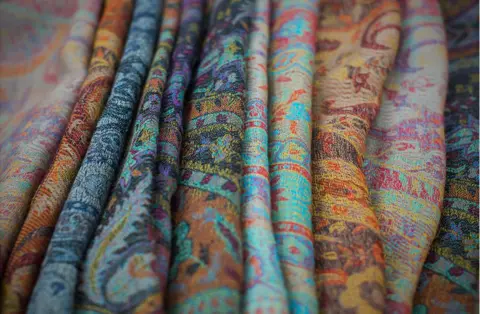 Andrew Newey
Andrew Newey"Another issue of concern is the increasing number of snow leopards in the region, putting their animals at increasing risk of attack. This is a result of the successful conservation efforts over the last decade.
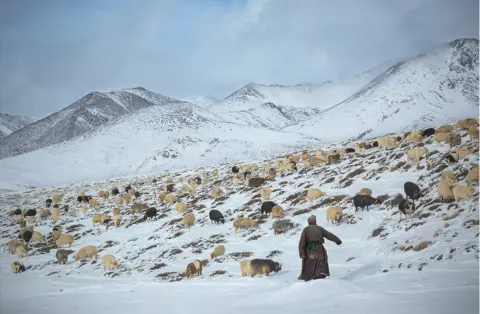 Andrew Newey
Andrew Newey"The threat to Pashmina goat-rearing would mean the end of the livelihoods of about 300,000 people in the Jammu and Kashmir state who, directly or indirectly, depend on Pashmina.
"It would also mean an end to the unique culture of the Changpas; most of them are followers of Tibetan Buddhism, and have an elaborate set of customs centred around their livestock."
 Andrew Newey
Andrew Newey
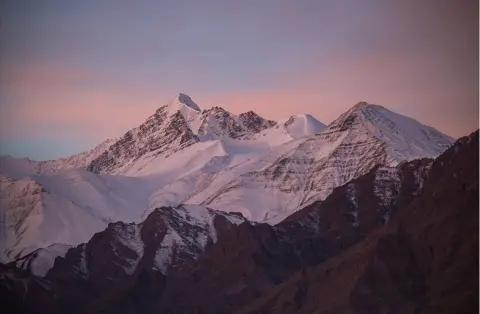 Andrew Newey
Andrew Newey
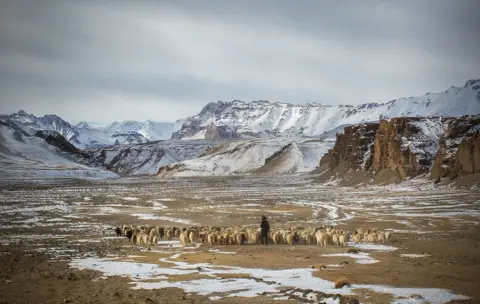 Andrew Newey
Andrew Newey.
